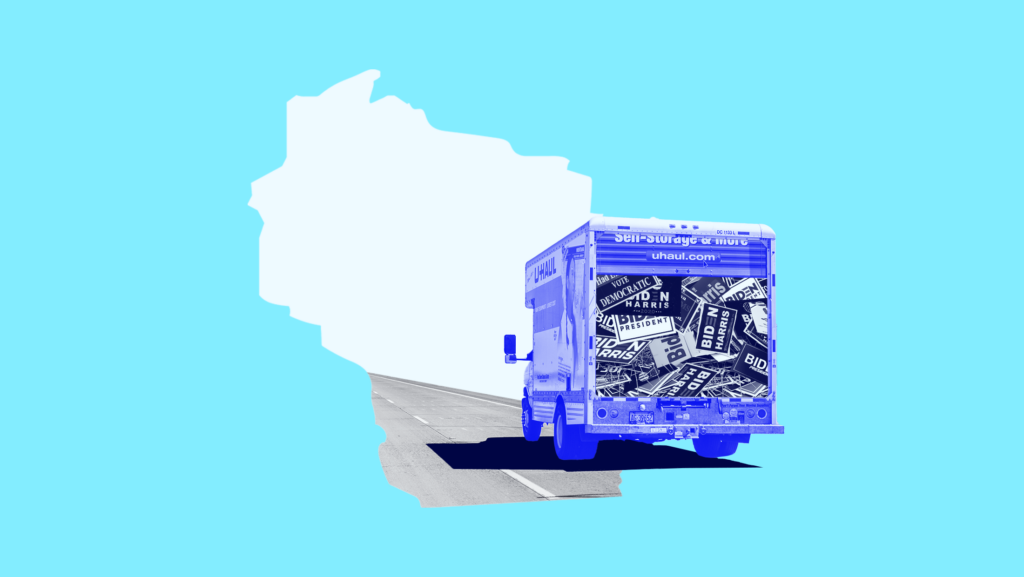Rural Democrats Need More Attention, and the Proof Is in Wisconsin

When I called Bill Crawford, a rural Democratic activist in Wisconsin, with news about a $5,000 grant as part of an experimental effort investing in Democratic county parties, I expected him to be happy. I did not expect the hoots and hollers nor the tears of joy from his team.
The grant was one of 80 that Movement Labs, a political consulting firm and incubator, gave to rural county parties in Arizona, Kansas, Michigan, Montana, Virginia and Wisconsin in the build-up to the 2022 midterms. The firm launched a program called Contest Every Race in 2018 to solve a big problem in rural America: 70% of elections don’t even have Democrats running in them.
Now, with Judge Janet Protasiewicz advancing to the general election for the Wisconsin Supreme Court, I must say I am simultaneously shocked and emboldened. Her clear primary win in one of the most consequential races of the year is a beacon of opportunity for Democrats. She won more votes than the two conservative judges combined, and a large portion of these votes came from rural communities. Three of the five counties in Wisconsin that pushed texts to get out the vote tipped progressive by decent margins: Walworth County went 9% more progressive compared to the last primary in 2020; Jefferson County went up 11%, and Brown County went up 8%.
I’ve seen firsthand how it is possible for historically uncontested races led by GOP candidates to be flipped and for previously guaranteed seats to be up for grabs. Copious elbow grease, resources, and sheer determination to build community in these areas are paramount. But Wisconsin isn’t the first example of how amplifying local Democrats led to a surprising result.
Rural politics has not always been so lopsided. In 2008, the Democratic Party won 43% of the rural vote, helping power Barack Obama to the presidency.
But in recent years, Democrats have disinvested from these regions and their voters.
Around the 2018 election, I became the executive director of the Missouri Democratic Party. Before my laptop hit my office desk, grievances from rural party leaders flooded in. They told us they needed yard signs — during a $10 billion presidential election, rural Democrats couldn’t get yard signs.
As we head toward 2024, Democrats across the country need to strategize to engage and uplift rural voters so that we see more results like what we just saw in Wisconsin.
Then, during the height of the pandemic, I drove a U-Haul truck jam-packed with signs for President Joe Biden through 30+ rural Missouri counties, hoping a handful of people would pick them up. We were greeted with long lines and grateful, smiling faces, and we distributed 10,000 signs.
This led me to Movement Labs, where I was tasked with launching a program designed to invest in rural Democratic county parties across the country. After a far-reaching analysis, meetings with over 50 rural Democratic leaders, and some hiccups with initial program ideas, we settled on a plan: “pay-for-success” rural organizing grants. We would give county parties $500 per quarter — a meaningful sum for organizations with no budget — if they completed basic monthly organizing actions.
The results were promising from the get-go. Over 50% of rural counties applied to be part of our program. We granted $150,000 to 80 county parties throughout the nation, and they knocked on over 160,000 doors, had 3,000 one-on-one organizing conversations, and held more than 200 events with 3,500 attendees.
After the dust cleared, the rural teams helped flip four state House seats — three in Michigan and one in Arizona — determining the balance of state legislatures. In Wisconsin alone, this program granted $25,000 to 17 counties and reached 119,667 voters in seven counties via text messages.
As we head toward 2024, Democrats across the country need to strategize to engage and uplift rural voters so that we see more results like what we just saw in Wisconsin.
First, we need to amp up and turn to rural Democratic leaders who are out there already. They know their community. They are creative, determined and want to get voters to turn out.
Second, some of the county parties’ most important work is about building community and erasing the taboo of being a rural Democrat. Local blood drives, charity events, social services and mutual aid projects led by our team at Movement Labs had a noticeable impact on the Democratic Party brand in these communities.
Finally, the money. We granted $150,000 in total and saw huge activity costing far less than campaigns normally pay. It’s not unusual for activists to need money to do their work; what’s unusual here is how little they have now and how much they can do with just a little more.
We have a long way to go, and after the upcoming Wisconsin Supreme Court general election this April, we will have a clearer vision as to what stepping stones will lead us to victory in 2024. But I can tell you that I’m doubling down and focusing on our rural communities with the hunch that they will be what makes the biggest (blue) splash.
Lauren Gepford is the managing director of Contest Every Race and previously served as executive director of the Missouri Democratic Party.